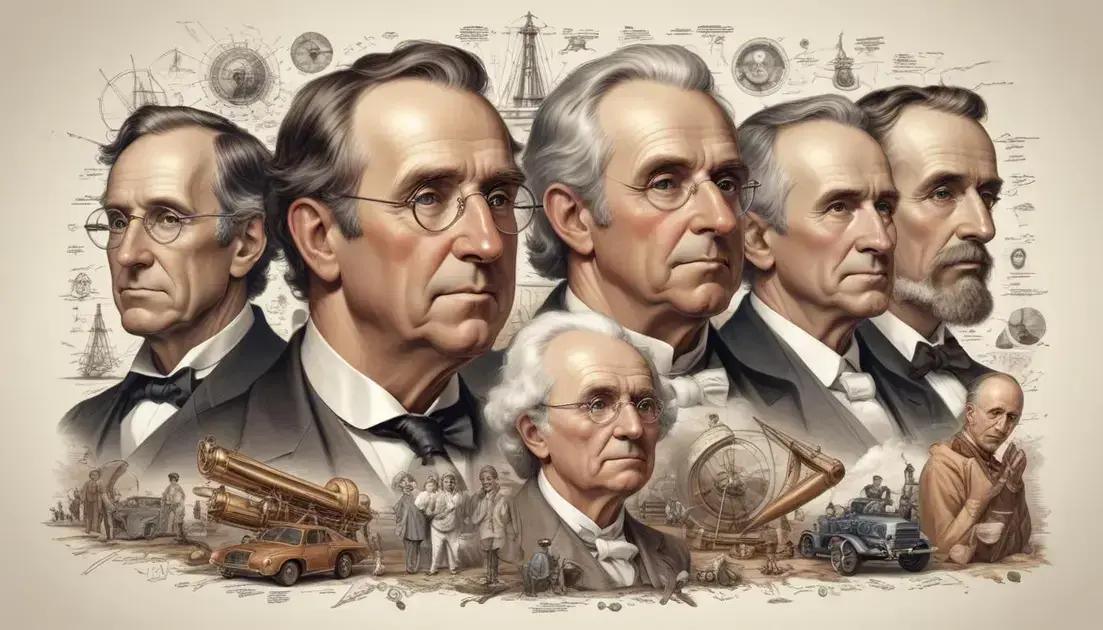
Chernobyl: from tragedy to myth
The Chernobyl disaster serves as a critical example of the importance of nuclear safety and emergency preparedness. It led to significant changes in safety regulations, highlighting the need for transparent communication during crises. Key lessons learned include the value of strict safety practices, the necessity of clear emergency plans, and the importance of ongoing environmental recovery efforts to protect ecosystems. Understanding these lessons helps guide current and future nuclear energy policies to prevent similar tragedies.
When we talk about Chernobyl, we’re delving into a tale that intertwines disaster and myth. Curious? Let’s explore the layers behind this iconic event.
The Chernobyl disaster overview
The Chernobyl disaster happened on April 26, 1986. It was a terrible nuclear accident at the Chernobyl Nuclear Power Plant in Ukraine. This event is one of the worst nuclear disasters in history.
During a safety test, the reactor went out of control. An explosion released a huge amount of radioactive material into the air. This cloud spread across Europe, affecting many countries.
Immediately after the explosion, workers and firefighters rushed to help. They faced dangerous radiation levels, trying to put out fires and contain the damage. Sadly, many of these brave individuals suffered severe health problems later.
Immediate Aftermath
After the explosion, more than 100,000 people were evacuated from nearby areas. The town of Pripyat, home to plant workers and their families, was evacuated over 24 hours. It became a ghost town.
The Soviet government initially downplayed the incident. But as the effects became clear, they had to admit the disaster’s severity. International help was needed to manage the cleanup.
Long-Term Effects
The long-term effects of the Chernobyl disaster are still felt today. Many people have had to leave their homes permanently. Health issues such as cancer and other diseases have increased in affected areas.
Chernobyl has also impacted wildlife. The exclusion zone has become a unique area where nature has started to reclaim the land. Animals are returning, and plants are growing wild, but radiation still poses a risk.
Chernobyl in Culture
The Chernobyl disaster is more than a historical event; it’s also a powerful symbol. It represents the dangers of nuclear energy and has inspired many movies, books, and documentaries. These stories highlight both human error and the resilience of the human spirit.
The aftermath and clean-up efforts
After the Chernobyl disaster, the scene was devastating. Many people were in danger, and the area around the plant was filled with radiation. Quick action was essential to handle the crisis.
Emergency workers rushed to the site. They faced extreme risks from radiation but worked hard to contain the situation. These workers included firefighters, engineers, and soldiers.
The first responders did heroic work. They battled chemical fires and stopped explosions from happening again. Sadly, many suffered serious health effects later.
Evacuating Residents
One of the first steps taken was to evacuate nearby residents. Over 100,000 people were moved from their homes. The towns of Pripyat and Chernobyl were evacuated quickly. Families had to leave everything behind.
People thought they would return soon, but that didn’t happen. The evacuation turned into a permanent relocation for most. The region became known as the exclusion zone.
Clean-Up Operations
Cleanup efforts began almost immediately. Workers used heavy machinery to remove radioactive debris. This included mud, soil, and plant materials.
They also built a sarcophagus over the exploded reactor. This structure was meant to contain radiation and prevent more leaks. However, it was only a temporary measure.
Long-Term Solutions
In the years that followed, planners looked for long-term solutions. A new containment structure was designed. This would safely cover the reactor for years to come.
Throughout the cleanup, many people worked in shifts, often facing dangerous levels of radiation. The efforts took years to complete, and even today, the area remains monitored for safety.
The Chernobyl disaster changed how the world views nuclear safety. It showed the need for strict regulations and better emergency preparedness to protect people and the environment.
Chernobyl in popular culture
Chernobyl is not just a historical event; it has become a part of popular culture. Movies, books, and documentaries often explore this disaster. They highlight not just the facts but also the human stories behind it.
Many films use Chernobyl as a backdrop for thrilling or scary plots. These movies sometimes exaggerate the horror, but they also show the disaster’s real impact. Audiences can feel the fear and the tragedy of what happened.
Documentaries and Series
Documentaries provide a more detailed look at the events. Shows like “Chernobyl” on HBO gained a lot of attention. They showed the truths and dangers surrounding the accident.
These programs often include interviews with survivors and experts. They reveal the struggles of people affected by radiation. The stories remind us of human courage in the face of disaster.
Books and Literature
Books about Chernobyl range from factual accounts to fictional stories. Authors write about the disaster’s effects on families and the environment. They create compelling narratives that help readers understand the real-life consequences.
Some stories include survivors and their difficult journeys. This literature brings emotions to the forefront. It helps readers connect with the past and feel the weight of those experiences.
Video Games and Other Media
Video games like “S.T.A.L.K.E.R.” bring Chernobyl into interactive storytelling. Players explore the exclusion zone, facing dangers in a fictional setting inspired by reality. This approach allows players to engage with history in a unique way.
Chernobyl continues to inspire art, music, and fashion. Artists use the disaster as a theme to discuss memory, loss, and survival. This blend of culture keeps the conversation alive and ensures we remember the lessons learned.
The myths surrounding Chernobyl
The myths surrounding Chernobyl are as powerful as the disaster itself. Many stories focus on the dangers of radiation and the disaster’s effects. These myths can spread through media, books, and conversations.
One major myth is that everything in the exclusion zone is dead. While the area had massive destruction, nature is making a comeback. Animals and plants are thriving in some spots, despite radiation.
Ghost Town Stories
Many believe that Pripyat is a ghost town filled with spirits. This idea ties to the fear and tragedy of the disaster. However, many people who lived there are still alive. They often share their experiences and memories.
Some stories exaggerate the dangers of living near Chernobyl. Though there are real risks, the area does have controlled access for workers and researchers.
The “Cursed” Zone
People sometimes call the exclusion zone “cursed.” They think it brings bad luck or suffers from supernatural problems. While the disaster left a heavy mark, this belief can lead to misunderstanding.
Scientists study the area to learn about radiation and recovery. They find that the ecosystem is more complex than many realize. These studies challenge the idea of a cursed or barren land.
Misunderstood Radiation Levels
People often have false ideas about radiation levels in Chernobyl. The media can really stir up fears. Not everyone in the exclusion zone faces direct harm. Many workers wear protective gear to limit exposure.
The truth is, radiation is everywhere. What matters is the amount and exposure duration. Studies show that Chernobyl workers endured safety protocols. Many have lived long lives despite working in such conditions.
These myths about Chernobyl mix fear with fascination. They remind us of the disaster’s impact and its ongoing legacy. Understanding the facts helps clear up these misconceptions.
Lessons learned from the tragedy
The Chernobyl disaster taught us many valuable lessons. Understanding these lessons is crucial for preventing future accidents. Some of the biggest lessons focus on safety, communication, and preparedness.
Safety Regulations Matter – One essential lesson is the need for strict safety regulations. Effective rules help protect workers and the public from risks. After Chernobyl, governments around the world improved their nuclear safety standards.
These enhanced regulations focus on preventing accidents and reducing risks. Regular inspections and safety drills are now part of the norm.
Transparency is Key
Another lesson is the importance of clear and honest communication. During the Chernobyl disaster, information was often delayed or incorrect. This led to public mistrust and fear.
Today, transparency can help prevent panic and confusion. Sharing accurate information quickly is vital for public safety. It builds trust between authorities and communities.
Preparedness and Emergency Response
Preparedness is also a critical lesson from Chernobyl. Having an emergency plan can save lives. There must be clear guidelines on how to respond to a nuclear accident.
Regular training exercises for emergency responders ensure they know what to do during a crisis. These practices can make a huge difference in saving lives and managing a disaster effectively.
Environmental Recovery
Finally, we learned about the importance of environmental recovery. Chernobyl showed us the long-lasting effects of radiation. It reminded us of our duty to protect the planet and its ecosystems.
Long-term studies on wildlife and plant life in the exclusion zone continue. These studies help scientists learn how to restore ecosystems after disasters.
The lessons from Chernobyl are crucial for today’s nuclear energy policies. They guide safety practices and help us avoid making the same mistakes in the future.
Conclusion
In conclusion, the Chernobyl disaster taught us vital lessons about safety, communication, and preparedness. The importance of strong safety regulations is clear, as they help protect both workers and the public from potential harm. We also learned that being transparent with information builds trust and reduces panic during emergencies.
Being prepared with clear emergency plans can save lives and help communities respond effectively to crises. Finally, the ongoing study of environmental recovery highlights our responsibility to protect our planet. By using these lessons, we can create safer nuclear energy practices and hope to prevent future tragedies.


